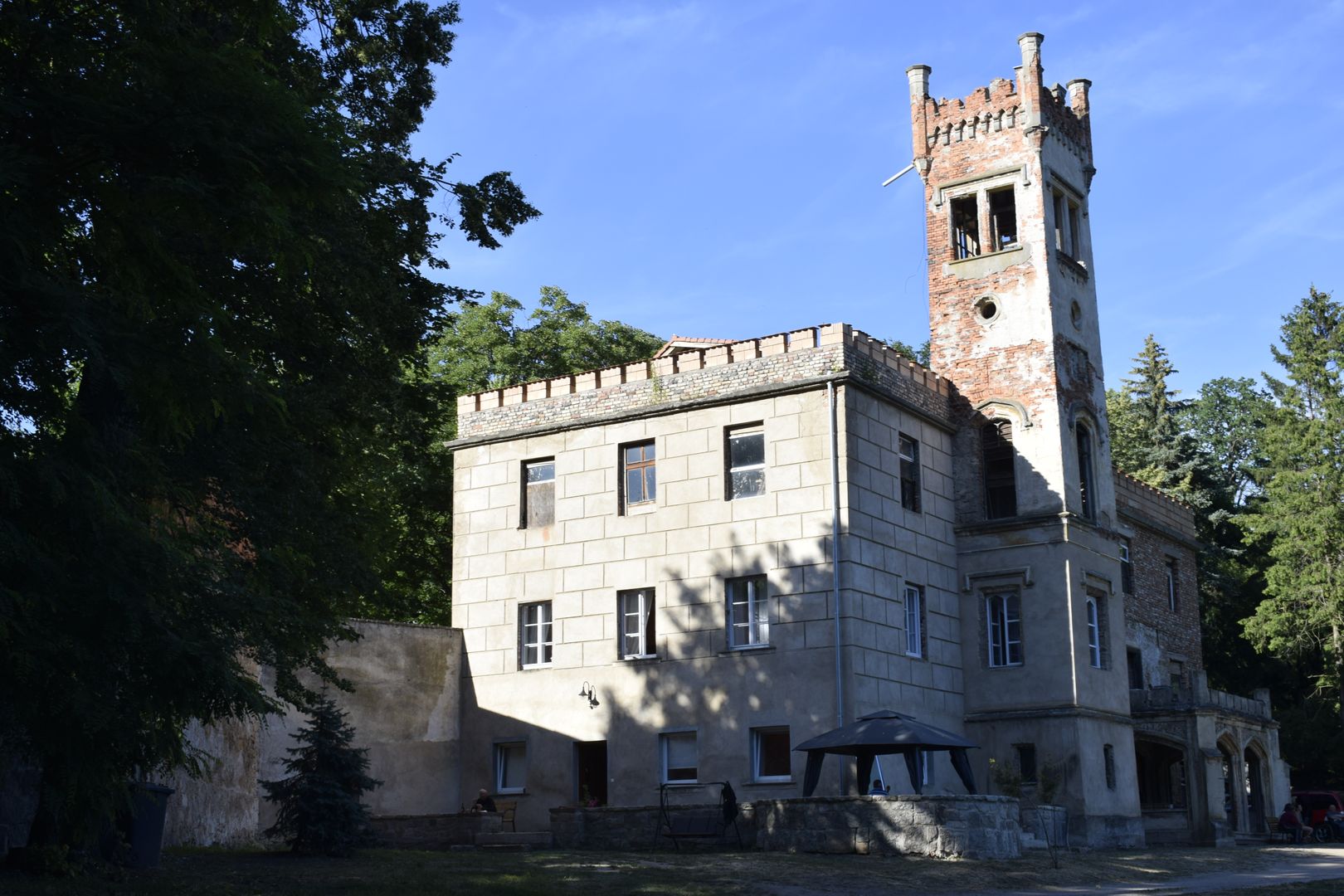Dąbrowica Palace
6.86

Overview
The Palace in Dąbrowica, located in the northeastern part of the village in the Lower Silesian Voivodeship, boasts a rich history dating back to the second half of the 15th century, when it originally served as the estate manager's residence. Over the centuries, the property was owned by various families, including the von Zedlitz, von Borowitz, von Carwarth, von Frankenberg, and von Buchs families. In the 18th century, it became a permanent feature of the regional landscape when a Baroque palace was constructed in 1751, distinguished by its elegant architecture. In the 19th century, the building underwent renovations, including a transformation in the Tudor Neo-Gothic style commissioned by the von Rosen family, aimed not only at enhancing its aesthetics but also at adapting the palace for use as a summer manor. The palace's architecture combines Neo-Gothic and eclectic elements, featuring three stories, a preserved entrance portico, a square tower, and a partially intact southeastern façade adorned with a cartouche bearing coats of arms and crenellations. Interestingly, the palace not only held administrative significance but also stood as a symbol of local culture for many years. After numerous upheavals in the 20th century, the property was acquired by a local family, who undertook its restoration and reconstruction, breathing new life into it while preserving its historical character. Today, part of the palace serves residential purposes, reflecting the ongoing connection between the community and this historic site.
Location
2025 Wizytor | All Rights Reserved